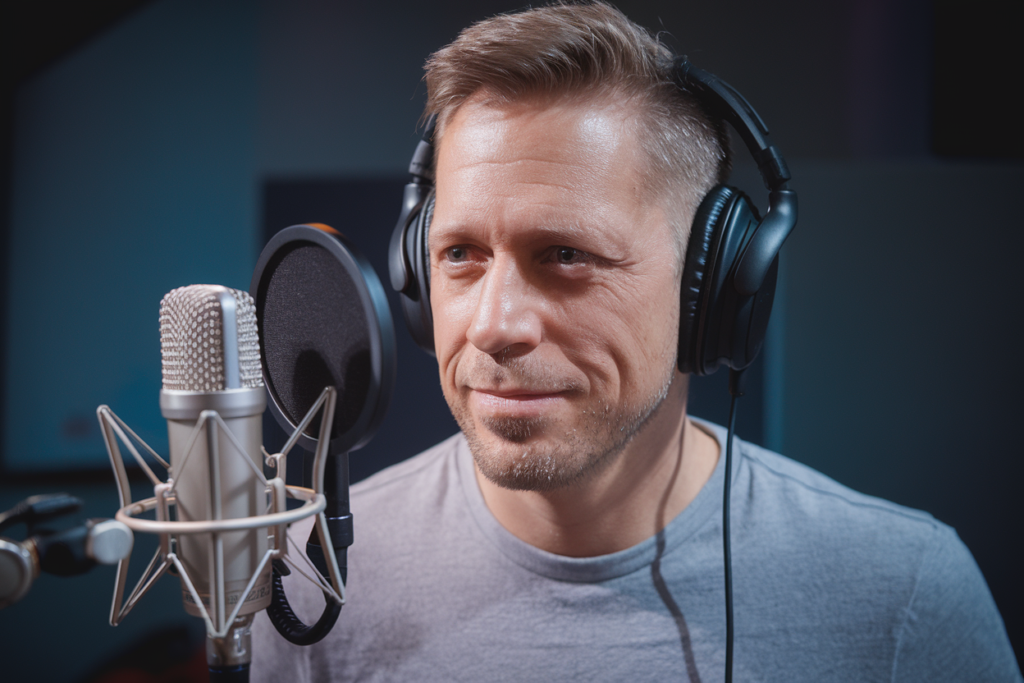Key Takeaways
- Regional Diversity: Germany consists of 16 federal states, each exhibiting unique dialects and accents that reflect local culture and heritage.
- Distinct Dialects: Notable dialects include Bavarian in the south, Saxon in the east, Low German in the north, Swabian in southwestern regions, and Kölsch in the Rhineland.
- Cultural Influences: Local traditions and historical events significantly impact dialect development, showcasing how language evolves within its cultural context.
- Linguistic Features: Variations in vocabulary and pronunciation across regions contribute to a rich tapestry of linguistic diversity that enhances local communication.
- Modern Influences: Globalization and media are reshaping regional variations by introducing new vocabulary and popularizing different accents, enriching the overall language landscape.
Ever wondered why German sounds so different from one region to another? The beauty of Germany lies not just in its stunning landscapes and rich history but also in the fascinating variations of the German language across its regions. From Bavaria’s charming dialects to the crisp accents of northern Germany, each area offers a unique twist that reflects its culture and heritage.
Overview of Germany Regions
Germany consists of 16 federal states, each with distinct cultural and linguistic characteristics. These regions showcase a fascinating array of dialects, accents, and traditions that enrich the German language landscape.
- Bavaria: Known for its rich folklore and traditional festivals like Oktoberfest, Bavaria features a unique dialect called Bavarian (Bairisch). This regional variant includes variations in vocabulary and pronunciation that set it apart from Standard German.
- Saxony: In Saxony, you’ll encounter the Saxon dialect (Sächsisch), which has notable differences in intonation and vowel sounds. The region is also home to cities like Dresden and Leipzig, known for their historical significance.
- Northern Germany: This area showcases Low German (Plattdeutsch), characterized by its flat intonation and specific vocabulary influenced by maritime culture. Coastal towns reflect this heritage through their distinctive speech patterns.
- Swabia: Swabian (Schwäbisch) highlights the quirks of southern German speech with its own set of grammatical rules and expressions. Swabians often take pride in their culinary specialties as well as their dialect.
- Rhineland: The Rhineland region features a mix of dialects due to its diverse population. Cologne’s Kölsch offers a lively twist on spoken German, making it an integral part of local identity during carnival celebrations.
- Hesse: Hesse showcases Hessian (Hessisch), where you’ll find variations in pronunciation that can baffle non-locals but endear locals toward one another through shared understanding.
These regional differences not only reflect local customs but also play a crucial role in showcasing your message effectively when engaging with various audiences across Germany’s cultural tapestry. Understanding these nuances can enhance communication strategies tailored to specific demographics or locales within Germany.
Geographic Distribution of German Variations
German language variations reflect the rich cultural diversity across different regions in Germany. Each area boasts unique dialects and accents, shaping local identity and communication.
Northern Germany
In Northern Germany, you’ll find a distinct Low German dialect known as Plattdeutsch. This variation is influenced by maritime culture and history, showcasing unique vocabulary and pronunciation. Cities like Hamburg offer a blend of traditional Low German with more modern influences. You may notice that locals often use specific terms related to fishing or shipping, highlighting their close ties to the sea.
Southern Germany
Southern Germany features prominent dialects such as Bavarian and Swabian. The Bavarian dialect is celebrated for its melodic tone and rich folklore; it’s common in cities like Munich. Swabian, found in areas like Stuttgart, includes grammatical quirks that set it apart from Standard German. These regional variations not only enhance conversations but also deepen your understanding of local customs and traditions.
Eastern Germany
Eastern Germany showcases the Saxon dialect, particularly prevalent in historical cities like Dresden and Leipzig. This dialect has distinctive phonetic characteristics that differ significantly from other regions. You’ll encounter phrases steeped in history that reflect the region’s past struggles and triumphs. The influence of nearby Slavic languages can also be heard here, adding another layer to this fascinating linguistic tapestry.
Western Germany
Western Germany presents a diverse array of dialects influenced by its proximity to Belgium and France. In the Rhineland region, Kölsch is a lively dialect spoken in Cologne; it’s recognized for its cheerful intonation and vibrant expressions. Other areas feature varying degrees of High German mixed with local flavors—this results in lively conversations filled with regional flair that make interactions truly memorable.
These geographic distinctions contribute not only to communication but also foster connections among communities throughout your journey across Germany’s varied landscapes.
Cultural Influences on Language Variations
Cultural influences shape the diverse language variations found across Germany, reflecting its rich heritage. Regional dialects and accents reveal local identities and traditions, showcasing how language evolves within its cultural context.
Historical Context
Historical events significantly impacted the development of German dialects. The influence of various tribes, migrations, and political changes created a tapestry of linguistic diversity. For instance, the Saxon dialect emerged from the merging of Germanic tribes in eastern regions. Similarly, Bavaria’s distinct Bavarian dialect reflects centuries of isolation due to mountainous geography combined with unique historical influences from neighboring cultures. These historical contexts contribute to how communities communicate today.
Local Traditions and Dialects
Local traditions play a crucial role in shaping regional dialects throughout Germany. Each federal state boasts unique customs that influence speech patterns and vocabulary. In Bavaria, folk festivals like Oktoberfest highlight Bavarian pride while reinforcing local expressions and phrases used during celebrations. In Northern Germany, maritime culture affects Low German vocabulary due to its proximity to the sea; terms related to fishing or sailing often pop up in everyday conversations.
Moreover, many regions maintain their own storytelling traditions or folk tales that incorporate specific dialects—this not only preserves language but also fosters community connections through shared narratives. As you explore these cultural nuances, you’ll find each region’s voice reflects its history and traditions harmoniously intertwined with language evolution.
Linguistic Features of German Variations
German language variations showcase unique linguistic features that reflect regional identities and cultural nuances. These distinctions in vocabulary and pronunciation contribute to the rich tapestry of the German language, enhancing local communication and fostering community ties.
Vocabulary Differences
Vocabulary varies significantly across Germany’s regions. For instance, in Bavaria, you might hear “Semmel” for bread roll, while in northern regions, “Brötchen” serves the same purpose. This variance extends beyond everyday items; expressions also shift depending on location. In Saxony, phrases often carry historical context shaped by local traditions and experiences, enriching conversations with depth and meaning. Such differences not only highlight regional pride but also serve as a bridge connecting locals through shared heritage.
Pronunciation Variations
Pronunciation plays a crucial role in distinguishing German dialects. For example, southern Germans typically pronounce ‘ch’ softer than their northern counterparts, who may articulate it more sharply. The melodic tones of Bavarian can sound entirely different from the flat intonation found in Low German spoken along the coasts. These variations create distinct accents that evoke a sense of belonging among locals while sometimes posing challenges for outsiders trying to understand or communicate effectively.
Navigating these linguistic features provides insight into Germany’s diverse culture and history. Embracing these variations fosters appreciation for the richness embedded within each region’s voice.
Impact of Modern Developments
Modern developments significantly influence regional variations in the German language. These changes shape how dialects evolve and adapt within contemporary society.
Globalization and Language Change
Globalization introduces new vocabulary and influences from other cultures, affecting local dialects across Germany. As people connect globally, they incorporate foreign terms into everyday communication. For instance, English phrases often blend with traditional German expressions, enhancing linguistic diversity. This fusion can lead to the emergence of hybrid dialects that reflect a more global identity while still retaining regional characteristics. Such shifts challenge traditional norms but also enrich the language landscape.
Media Influence on Regional Variations
Media plays a pivotal role in shaping regional variations by popularizing certain accents and speech patterns. Television shows, movies, and social media platforms expose audiences to various dialects beyond their immediate surroundings. This exposure fosters greater acceptance of different ways of speaking while creating a shared cultural experience among viewers from diverse backgrounds. Additionally, voice actors bring life to characters using distinct regional accents; this not only entertains but also highlights linguistic diversity in an engaging way.
As these modern developments unfold, they continue to reshape the intricate tapestry of German language variations while preserving each region’s unique voice and heritage.
Conclusion
Exploring the regional variations of the German language reveals a vibrant tapestry of culture and identity. Each dialect tells its own story shaped by history, geography, and local traditions. From Bavaria’s melodic tones to Northern Germany’s maritime influences, these differences enrich communication and foster community connections.
As globalization continues to influence language, modern developments are blending traditional dialects with new vocabulary. This evolution highlights the dynamic nature of the German language while preserving its rich heritage. Embracing these variations not only deepens your understanding of Germany’s diverse culture but also enhances your appreciation for each region’s unique voice.
Frequently Asked Questions
What are the main dialects of the German language?
The major dialects include Bavarian, Saxon, Low German (Plattdeutsch), Swabian, and Kölsch. Each reflects unique cultural traits and historical influences from their respective regions in Germany.
How do regional dialects shape local identity in Germany?
Regional dialects foster a sense of belonging and community by reflecting local traditions and customs. They also enhance communication among residents, strengthening cultural ties within each area.
What is the significance of Bavaria’s dialect?
Bavarian dialect is known for its melodic quality and rich folklore. It plays an essential role in preserving local traditions and expressions, particularly during events like Oktoberfest.
How has globalization impacted German dialects?
Globalization has introduced new vocabulary and hybrid forms of speech into regional dialects. This evolution reflects both a global identity while retaining traditional characteristics unique to each region.
What are some examples of vocabulary differences among German dialects?
In Bavaria, “Semmel” refers to a bread roll, while in northern Germany, it’s called “Brötchen.” Such variations illustrate how different regions have distinct linguistic preferences.
How do historical events influence German language variations?
Historical migrations and political changes have shaped the development of various German dialects. For instance, the Saxon dialect emerged from the merging of different Germanic tribes over time.
Why are pronunciation differences important in understanding regional accents?
Pronunciation differences reveal much about local identities. For example, southern Germans pronounce ‘ch’ softer than those in northern areas, showcasing distinct regional characteristics that enrich communication.
Can media affect how regional languages evolve in Germany?
Yes! Media popularizes certain accents and speech patterns, leading to greater acceptance of diverse ways of speaking. This shapes modern perceptions while helping preserve traditional linguistic heritage.







